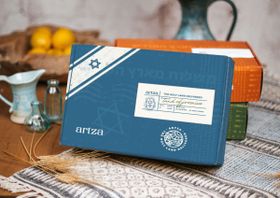Edom in the Bible
Published December 30, 2021.

"Edom" is the nickname of a man, originally called Esau, who is described in the Book of Genesis in the Bible’s Old Testament. "Edom" was also used as the name of the place where Esau went to live, the hilly part of southwest Jordan. Esau’s name was changed to Edom when he moved to that land.
Let’s take a look at all the Edoms in the Bible – the man, the place, and the community that made this name memorable through history.
Esau "Edom" in the Bible
The history of Edom in the book of Genesis describes how Esau and his brother Jacob, the grandsons of Abraham, had a difficult relationship. Constantly vying for power in the family, Jacob deceived their father, Isaac, to win Esau’s inheritance.
One day, Esau returned home from hunting. He was hungry and asked Jacob for the red lentil stew he had made. In exchange, Jacob then asked Esau to forfeit his inheritance as the eldest son, to which Esau agreed. Later, Isaac (the ancestor of the Jews) asked Esau to bring him a meat dish from the hunt so that he could bless him as the eldest son. Esau went hunting, and Jacob then pretended to be his brother, giving the blind Isaac a dish of goat meat. Isaac then accepted the dish, felt the hairy skin he thought was Esau’s (which was actually goat hair), and mistakenly gave his blessing to Jacob.
Esau returned and wanted to kill Jacob for stealing the sacred blessing, which could not be undone. The English reference to "a mess of pottage" refers to how Esau forfeited his inheritance for a lowly stew of red lentils. Their enmity continued, and after Isaac died, Esau left Canaan, establishing himself southwest of the Jordan River in an area named Edom.
The Significance of the Color Red
Esau got the nickname "Edom" when he moved to another land. The Bible describes him as having red hair like the surrounding land and rock. In Hebrew, "Edom" means "red."
Genesis describes Esau as red in complexion, the stew that Jacob made as a red stew, and the land that Esau moved to as having red sandstone rock. Red implies passion or conflict, symbolic of the brothers and their constant fighting. Esau’s tribes, otherwise known as the Edomites or the Semites, fought off any Israelites (Jacob’s tribes) who entered their territory.
The Land of Edom
The region where Edom once stood is now known as southwest Jordan, a hilly area on the eastern side of the beautiful Jordan River. Edom was known for its striking red cliffs, where the Horite people had previously lived in caves. Esau’s people married the Horite and Israeli people, but the Edomites lost their religious focus, and the enmity between Esau and Jacob continued for many years in the form of antagonism between the Edomites and the Israelites.
The story of the land of Edom is significant in that it shows how ongoing conflict ended in the loss of life and identity. The story shows how hostility in a family can persevere when love and forgiveness are not upheld.
The Edomites
They were the descendants of Esau and his community. The race of the Edomites assimilated with other communities, especially the Israelites. Today, the descendants of the Edomites are untraceable because they intermarried with the Horites and conquered tribes of Israelites. There are no modern-day Edomites who do not share heritage with other groups of people.
The Importance of the Edoms in the Bible
All three of the Edoms in the Bible were important: the man, Esau; the land of Edom; and the empire of the Edomites. Edom was destroyed because of its sin and ongoing fighting, as God had foretold. The message we can take from these stories is that even a fight between two people can wreak havoc on a whole nation and its future. Our actions, sometimes even ones which seem small, have consequences - often on a larger scale than we could ever imagine.




